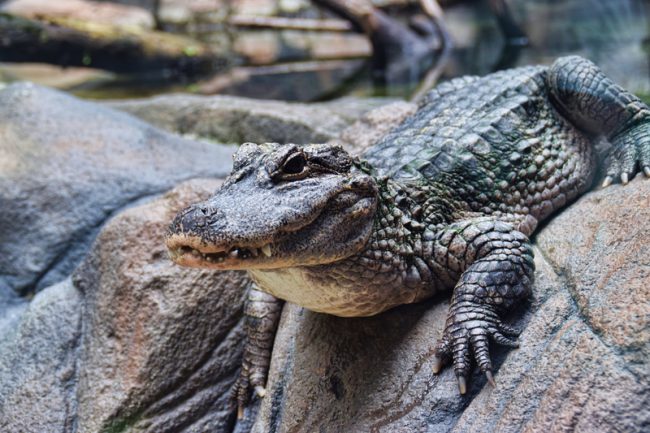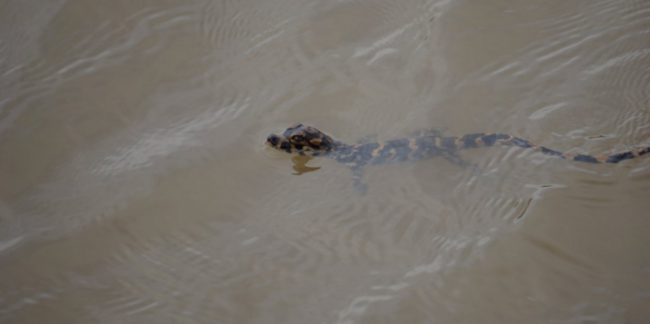When you hear the word "alligator", chances are you think quickly of a large reptile predator found in southeastern American States such as Florida, Georgia, Mississippi, and Louisiana. But that creature—known as the American alligator—is just one of two species of alligator in the world. The other one is the Chinese alligator.
Smaller in size... and in numbers

Sure, it's a bit smaller than an American gator... but let's keep our distance just in case! (© Vincentho | Dreamstime.com)
If this is your first time hearing about the Chinese alligator, that's understandable. For one, it's less than half the size its American cousin. Chinese gators are about 1.5 m (5 ft.), instead of being around 4 m (13 ft.) long. But sadly, there are also a lot less of them left in the world.
The American alligator was once an endangered species itself. But after being added to the Endangered Species list in 1973, its numbers rebounded quickly. Today, it's populations are doing extremely well. But experts estimate that there are only about 150 Chinese alligators left in the wild in China. That's actually a lot better than it was not that long ago. But it's still low enough that every new gator makes a very big difference. Speaking of which...
Three is the magic number

The nest of eggs recently discovered in the Dongtan Wetlands. (© WCS)
Recently, the Wildlife Conservation Society (WCS) reported that a nest of eggs in the Dongtan Wetlands Park in Shanghai have hatched. And most importantly, three baby gators were seen swimming in the water nearby. The wild population has already been receiving help from captive breeding programs (where zoos and supervised sanctuaries assist endangered animals as they breed and try to rebuild their numbers). For example, six Chinese alligators born at the Bronx Zoo in New York were released into the wild in China in 2015. But knowing that young gators are being born in the wild is extra important.
As Aili Kang, the WCS executive director for Asia programs, says, "This shows that even the most endangered wildlife can recover if given a chance." Way to go, gators!
 A brand new baby Chinese alligator swims in Dongtan Wetlands Park, near Shanghai, China. (© WCS)
A brand new baby Chinese alligator swims in Dongtan Wetlands Park, near Shanghai, China. (© WCS)










Cool